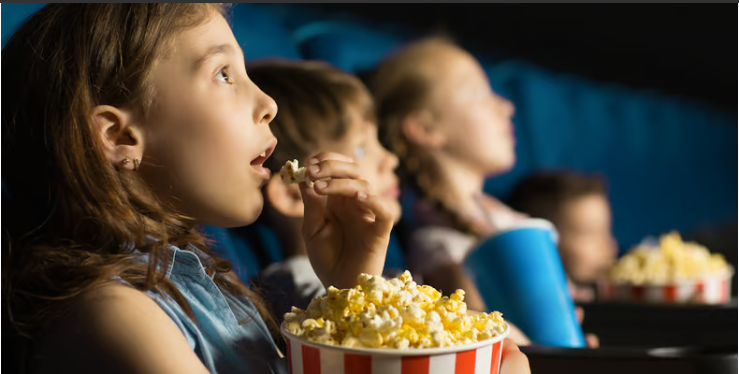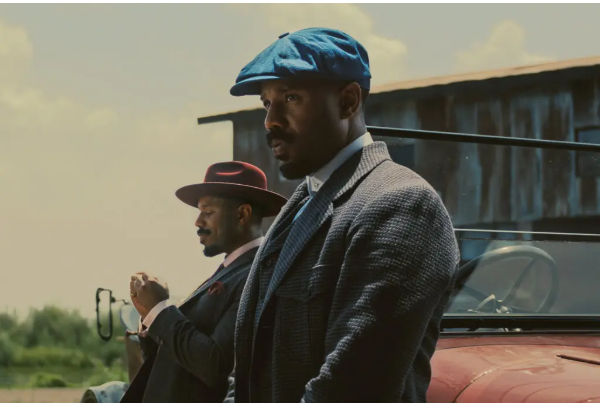
Rechna Varma is a filmmaker and associate professor of Professional Practice in Cinematic Arts at the University of Miami. “Do Not Disturb,” the fifth film she has produced, was released theatrically last year by Dark Star Pictures. As an educator and filmmaker navigating the intersection of independent cinema and television, her work examines the evolving relationship between art and commerce in modern filmmaking. In this piece, she explores the critical importance of experiencing movies in theaters.
The Decline of Moviegoing
Cinephiles are becoming an endangered species, and I’m witnessing their decline firsthand in my own classroom.
A generation raised on smartphones has been conditioned to look down rather than up—to engage with content in fragmented bursts rather than immerse themselves in the shared experience of the big screen. You might think my primary concern would be the rise of artificial intelligence in filmmaking, but the reality is more immediate and alarming: a growing disengagement from the cinematic experience itself.
For the first time in my teaching career, this past fall semester, my Cinematic Arts majors admitted they hadn’t seen a single movie in a theater all summer. Now more than ever, for the sake of community and culture, we need to revive the tradition of going to the movies.
The Value of Theatrical Experiences
I am not the first to sound the alarm. Director Sean Baker used his Best Director Oscar speech for Anora to champion the theatrical experience. But I have a front-row seat to an unsettling trend: aspiring filmmakers who are no longer watching movies in theaters.
This shift parallels changes in food culture. Just as people who have never tasted fresh, seasonal produce won’t seek it out, audiences who haven’t experienced cinema on the big screen lose their appetite for it—or don’t even know what they’re missing. In communities suffering from food insecurity, people become reliant on nutrient-deficient diets; similarly, when appreciation for artistic cinema is lost, audiences become susceptible to consuming only formulaic, mass-produced entertainment.
The Crisis of Cinematic Taste
The root of this crisis is taste. Since Iron Man (2008) launched the modern era of blockbuster superhero films, we’ve raised a generation of moviegoers who view cinema primarily through the lens of franchise fatigue. Their media diet has been shaped by reality television, social media clips, and streaming algorithms, leaving them disconnected from the rich artistic traditions of filmmaking.
As Martin Scorsese argued in The New York Times in 2019, contemporary cinema has largely abandoned its status as an art form. Instead of fostering an appreciation for film as an artistic medium, American theaters have become purveyors of a narrow selection of mainstream entertainment. Meanwhile, platforms like TikTok, YouTube, and Instagram deliver what Dr. Anna Lembke, author of Dopamine Nation (2021), describes as an endless stream of addictive digital stimulation.
The impact of this cultural shift is profound. Just as food deserts contribute to poor health outcomes, the absence of meaningful cinema in people’s lives leads to intellectual and emotional stagnation. My classroom, once a space for passionate discussions about film and storytelling, now feels like an exercise in reluctant consumption—akin to convincing children to eat their vegetables.
The Industry’s Role in This Shift
Upon returning from summer break, I discovered that my students hadn’t watched anything they found “interesting.” They didn’t go to the theater because “nothing was playing” or “nothing looked good.” This decline in moviegoing could be attributed to limited theatrical offerings, the dominance of digital distractions, or even financial barriers—but the reality remains the same: cinema students are actively choosing not to go to the cinema.
But is it really a choice? The film industry bears responsibility for this decline. Executives have prioritized quick profits over nurturing future audiences. Films are increasingly greenlit based on algorithms and market-tested formulas rather than artistic risk-taking. If audiences are only exposed to predictable blockbusters, they will naturally come to expect and demand only more of the same.
Restoring the Magic of the Movie Theater
Theaters themselves also need to step up. Many multiplexes fail to compete with the home viewing experience. From sound leakage between auditoriums to poorly maintained facilities, the quality of the theater experience has declined. A wish list for improvement would include cleaner venues, comfortable seating, and the return of ushers to enforce a distraction-free environment.
Just as a well-balanced diet requires variety, our minds thrive on exposure to diverse films and storytelling approaches. It’s time to reintroduce audiences to the magic of the cinema—before it disappears entirely.








